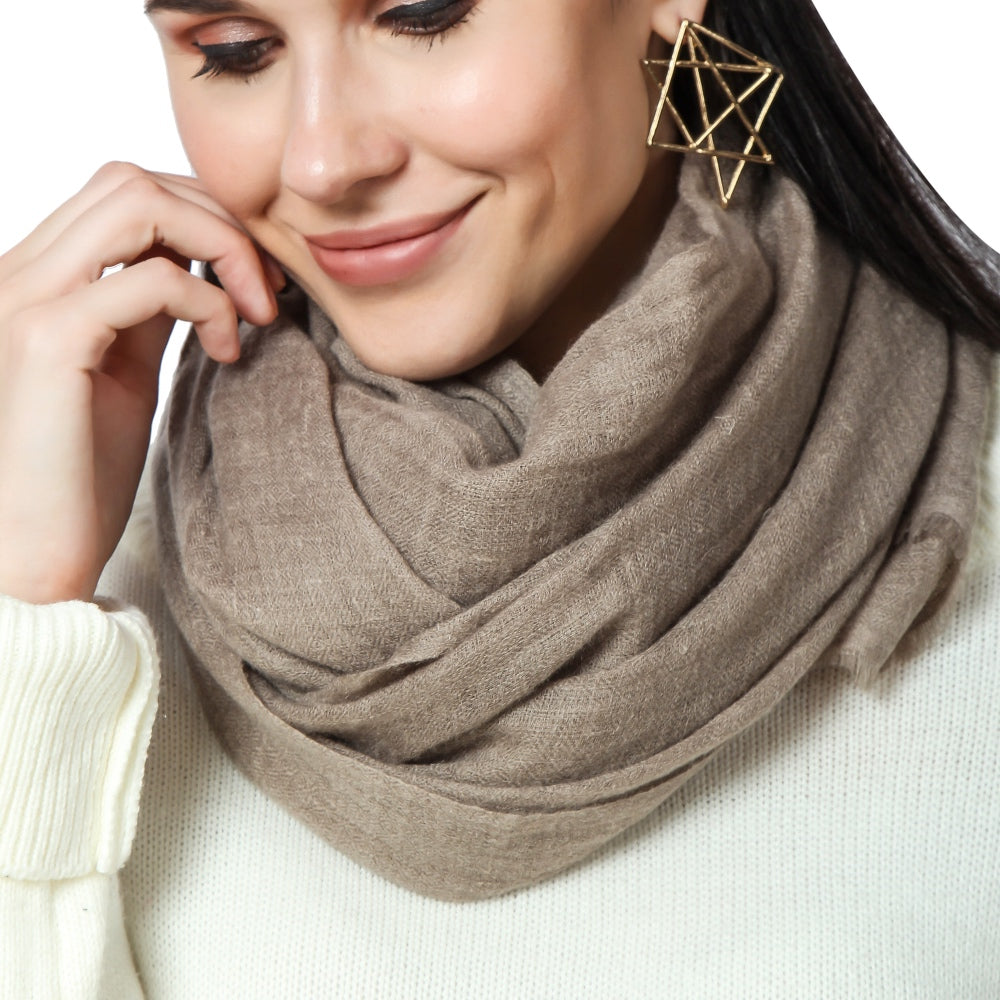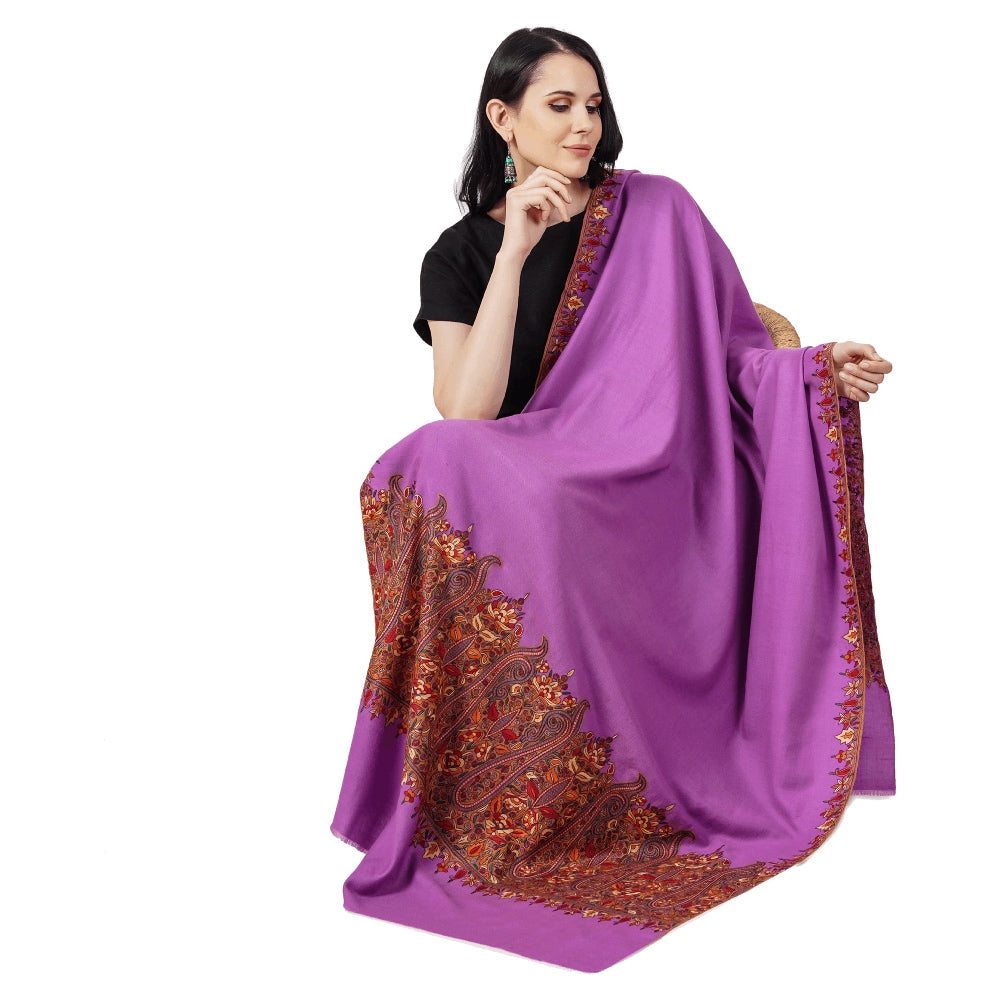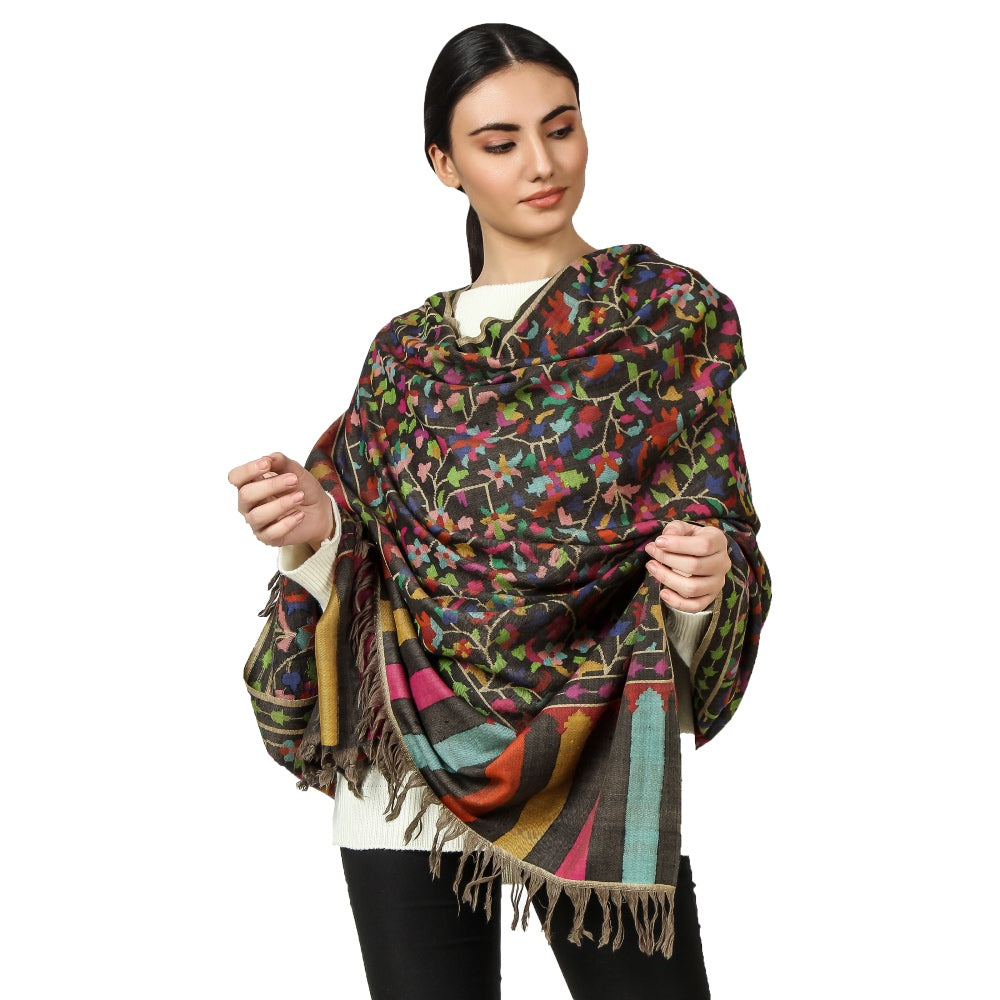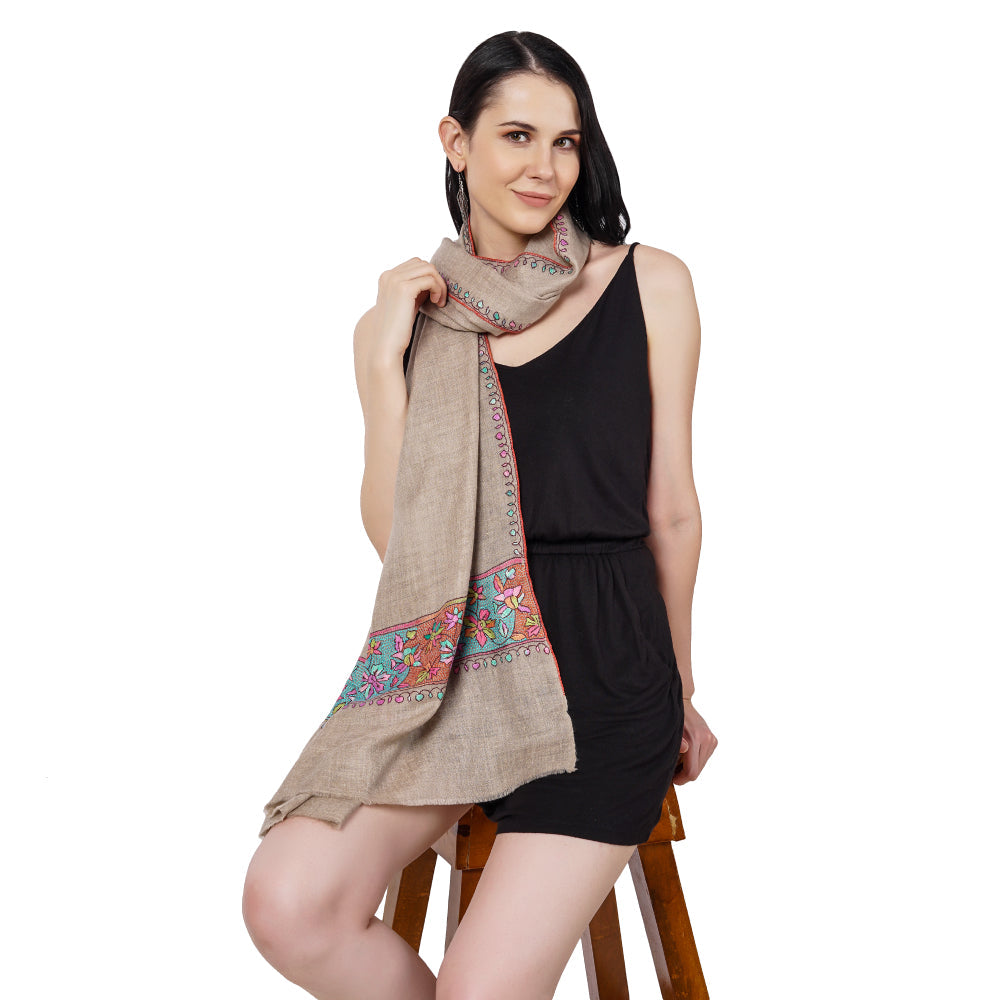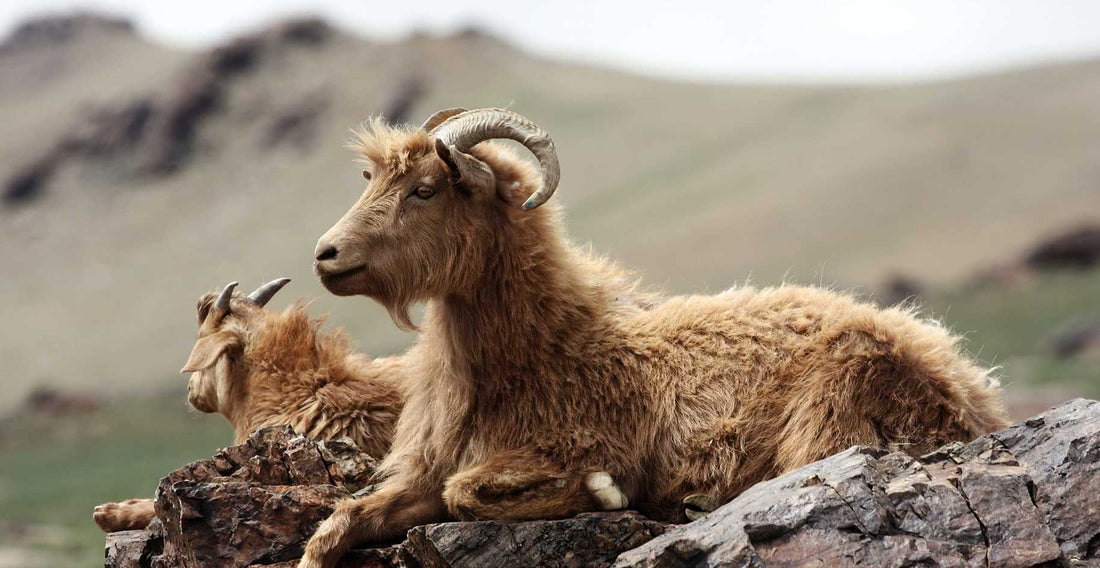
What is Pashmina Cashmere?
Share
Pashmina cashmere is a type of fabric that has been coveted for centuries for its softness, warmth, and luxurious feel. It is made from the undercoat of the Pashmina goat, a breed of goat that is native to the Himalayan regions of Nepal, India, and Pakistan. This fabric has been worn by royalty and elite members of society for centuries and has become synonymous with luxury and elegance.
What is Pashmina Cashmere?
Pashmina cashmere is a type of cashmere that is made from the downy undercoat of the Pashmina goat. This undercoat is extremely fine and soft, making it ideal for creating high-quality fabric. Pashmina cashmere is known for its exceptional softness, warmth, and insulation, making it a perfect choice for colder climates.
Brief History of Pashmina Cashmere:
The history of Pashmina cashmere can be traced back to the 3rd century BC, when the fabric was first woven in the Kashmir region of India. The Kashmiri people have been weaving Pashmina cashmere for over 500 years, and the art of weaving this luxurious fabric has been passed down from generation to generation.

During the Mughal era in the 15th and 16th centuries, Pashmina cashmere became a symbol of status and wealth. The Mughal emperors were known for their love of Pashmina cashmere shawls, and they would often gift them to visiting dignitaries and other members of royalty.
In the 19th century, the popularity of Pashmina cashmere spread to Europe, where it became a highly sought-after fabric. During this time, Pashmina cashmere shawls were worn by European royalty, and the fabric became a symbol of luxury and elegance.
Today, Pashmina cashmere is still highly valued and is used to create a wide range of clothing and accessories, including scarves, shawls, and sweaters.
Why Pashmina Cashmere is a Sought-After Fabric:
Pashmina cashmere is a sought-after fabric for a number of reasons. Firstly, it is incredibly soft and comfortable to wear. The fine fibers of the Pashmina goat's undercoat create a fabric that is much softer than regular wool or cashmere.

Secondly, Pashmina cashmere is very warm and provides excellent insulation. This makes it ideal for use in colder climates or during the winter months.
Finally, Pashmina cashmere is a luxurious fabric that is often associated with wealth and status. It has a timeless quality that makes it a great investment piece, and it can be worn for many years without losing its quality or beauty.
Pashmina cashmere is a fabric that has been valued for centuries for its softness, warmth, and elegance. It is a symbol of luxury and wealth, and it continues to be highly valued today. Whether you are looking for a beautiful shawl or a cozy sweater, Pashmina cashmere is an excellent choice that is sure to provide years of comfort and style.
Also reads: Where is Pashmina Goat found?
Understanding Pashmina Cashmere
Pashmina cashmere is a luxurious and sought-after fabric that is highly prized for its softness and warmth. In this section, we will take a closer look at what Pashmina cashmere is, how it is obtained, and the differences between Pashmina cashmere and regular cashmere.
Definition of Pashmina Cashmere:
Pashmina cashmere is a type of cashmere that is made from the undercoat of the Pashmina goat. This undercoat is extremely fine and soft, and it is only obtained once a year during the molting season. The fibers are then carefully collected, cleaned, and spun into yarn, which is used to create high-quality fabric.
How Pashmina Cashmere is Obtained:
Pashmina cashmere is obtained from the undercoat of the Pashmina goat, which is native to the Himalayan regions of Nepal, India, and Pakistan. The goats are kept by nomadic herders, who move them to higher elevations during the summer months to graze on fresh vegetation. When the weather turns colder, the goats grow a thick undercoat to protect them from the cold.

Once a year, during the molting season, the Pashmina goat naturally sheds its undercoat. This is when the fibers are carefully collected, cleaned, and spun into yarn. This process is time-consuming and labor-intensive, and it requires great skill and expertise to produce high-quality Pashmina cashmere.
Differences between Pashmina Cashmere and Regular Cashmere:
While Pashmina cashmere and regular cashmere share many similarities, there are some key differences between the two. Firstly, Pashmina cashmere is obtained from the undercoat of the Pashmina goat, which produces a finer and softer fiber than regular cashmere. This makes Pashmina cashmere more luxurious and more expensive.

Secondly, Pashmina cashmere is hand-spun and hand-woven, which gives it a unique texture and drape. Regular cashmere, on the other hand, is often machine-made, which can result in a less refined fabric.
Finally, Pashmina cashmere is often blended with silk to create a fabric that is even softer and more lustrous. This blend of Pashmina cashmere and silk is often used to create luxurious shawls and scarves that are lightweight, warm, and incredibly soft to the touch.
Pashmina cashmere is a type of cashmere that is highly prized for its softness, warmth, and luxurious feel. It is obtained from the undercoat of the Pashmina goat, which produces a finer and softer fiber than regular cashmere. While Pashmina cashmere and regular cashmere share many similarities, there are some key differences between the two that make Pashmina cashmere a more sought-after and luxurious fabric.
Also read: Is Pashmina and Cashmere same?
Characteristics of Pashmina Cashmere
Pashmina cashmere is a unique and luxurious fabric that is highly prized for its softness, warmth, and durability. In this section, we will take a closer look at the characteristics that make Pashmina cashmere so special.
Softness and Texture:
One of the most distinctive characteristics of Pashmina cashmere is its incredible softness. The fibers are extremely fine, and they have a unique texture that is both smooth and silky. When woven into fabric, Pashmina cashmere has a luxurious feel that is unmatched by any other material. It is often described as "buttery soft" or "heavenly to the touch."
Warmth and Insulation:
Another key characteristic of Pashmina cashmere is its ability to provide warmth and insulation. The fibers are hollow, which allows them to trap heat and create a layer of insulation around the body. Despite its lightweight feel, Pashmina cashmere is able to provide exceptional warmth even in cold and harsh weather conditions.
Durability and Longevity:
Despite its delicate and luxurious feel, Pashmina cashmere is surprisingly durable and long-lasting. The fibers are naturally strong, and they are able to withstand the rigors of everyday wear and tear. With proper care, Pashmina cashmere garments can last for many years, making them a worthwhile investment for anyone looking for a high-quality and timeless wardrobe staple.
Breathability and Moisture-Wicking:
In addition to its softness, warmth, and durability, Pashmina cashmere is also known for its breathability and moisture-wicking properties. The fibers are able to absorb moisture and sweat, which helps to keep the body cool and dry in hot and humid weather conditions. This makes Pashmina cashmere an ideal fabric for year-round wear, as it can provide comfort and insulation in both warm and cold climates.
Pashmina cashmere is a unique and luxurious fabric that is prized for its softness, warmth, durability, breathability, and moisture-wicking properties. These characteristics make Pashmina cashmere an ideal fabric for a wide range of garments, from cozy scarves and shawls to elegant dresses and suits. Whether you are looking for comfort, style, or both, Pashmina cashmere is sure to provide a luxurious and timeless addition to your wardrobe.
Also read: 30 Most frequently asked questions about Cashmere and Pashmina
How to Care for Pashmina Cashmere
Pashmina cashmere is a luxurious and delicate fabric that requires special care to maintain its softness and durability. In this section, we will cover the essential steps for caring for your Pashmina cashmere garments.
Washing and Drying Pashmina Cashmere:
When washing Pashmina cashmere, it is important to use a gentle detergent and to avoid harsh chemicals or bleach. You should always wash your Pashmina cashmere garments by hand or use the delicate cycle on your washing machine with cold water. Avoid twisting or wringing the fabric, as this can damage the fibers.
After washing, gently squeeze out excess water and lay the garment flat on a clean towel to dry. Avoid hanging Pashmina cashmere garments, as this can cause the fabric to stretch out of shape. Once the garment is dry, you can steam it lightly to remove any wrinkles.
Storing Pashmina Cashmere:
When storing Pashmina cashmere, it is important to keep the fabric protected from moths and other insects that can damage the fibers. You can use mothballs or cedar blocks to deter pests from your storage area.
It is also important to fold your Pashmina cashmere garments carefully to avoid stretching or damaging the fibers. Always store your Pashmina cashmere in a cool, dry place, and avoid exposing the fabric to direct sunlight or heat sources.
Preventing Damage to Pashmina Cashmere:
To prevent damage to your Pashmina cashmere garments, it is important to avoid wearing them with sharp jewelry or accessories that can snag or pull the fibers. You should also avoid rubbing or scratching the fabric, as this can cause pilling or damage to the fibers.
If you do notice pilling on your Pashmina cashmere garment, you can use a fabric shaver or a soft-bristled brush to gently remove the pills. Avoid using scissors or other sharp objects to trim the pills, as this can damage the fibers.
Caring for your Pashmina cashmere garments requires gentle handling, proper washing and drying techniques, careful storage, and prevention of damage from jewelry and accessories. By following these essential steps, you can ensure that your Pashmina cashmere garments remain soft, durable, and beautiful for many years to come.
Pashmina Cashmere Uses
Pashmina cashmere is a versatile and luxurious fabric that can be used in a variety of ways. Here are some common uses of Pashmina cashmere:
- Clothing made from Pashmina Cashmere
Pashmina cashmere is often used to create high-end clothing, such as sweaters, cardigans, and shawls. The fabric's softness, warmth, and breathability make it a popular choice for winter wear, but it can also be worn year-round.
- Accessories made from Pashmina Cashmere
Pashmina cashmere is also used to create a range of accessories, including scarves, hats, gloves, and socks. These items offer both warmth and style, making them a popular choice for fashion-conscious consumers.
- Home décor made from Pashmina Cashmere
Pashmina cashmere is a luxurious and elegant fabric that can be used to create beautiful home décor items, such as throw blankets, pillows, and curtains. These items can add a touch of sophistication and comfort to any room.
Benefits of Pashmina Cashmere
Pashmina cashmere offers a range of benefits beyond its luxurious feel and aesthetic appeal. Here are some of the key benefits of Pashmina cashmere:
- Health benefits of wearing Pashmina Cashmere
Pashmina cashmere is a natural and breathable fabric that can help regulate body temperature and wick away moisture, making it a healthy choice for clothing and accessories.
- Environmental benefits of Pashmina Cashmere production
Pashmina cashmere production is sustainable and eco-friendly, as the goats are raised on natural pasture and the fibers are harvested through combing, rather than shearing, which can cause stress to the animals.
- Social benefits of Pashmina Cashmere production
Pashmina cashmere production provides employment and economic opportunities for communities in regions such as Nepal, India, and Tibet.
The Pashmina Cashmere Industry
The Pashmina cashmere industry is a complex and global supply chain that involves multiple steps, from raising the goats to manufacturing and distribution. Here are some key aspects of the industry:
- Major producers of Pashmina Cashmere
The majority of Pashmina cashmere comes from regions in India, Nepal, and Tibet, although other countries such as Mongolia and China also produce the fabric.
- Manufacturing processes and supply chain
The manufacturing process for Pashmina cashmere involves multiple steps, including combing, sorting, cleaning, and spinning the fibers into yarn. The yarn is then used to create a range of products, from clothing to home décor items.
- Ethical and sustainable production practices
Many Pashmina cashmere producers prioritize ethical and sustainable practices, such as using natural pasture for the goats, harvesting the fibers through combing, and providing fair wages and working conditions for employees.
Misconceptions about Pashmina Cashmere
There are several misconceptions about Pashmina cashmere that can lead to confusion among consumers. Here are some common misconceptions:
- Pashmina Cashmere is not a wool
Pashmina cashmere is not a wool, but rather a type of hair that comes from the undercoat of the Pashmina goat.
- Pashmina Cashmere is not just for winter wear
While Pashmina cashmere is often associated with winter wear, it can also be worn year-round due to its breathability and moisture-wicking properties.
- Pashmina Cashmere is not only expensive
While Pashmina cashmere is often associated with luxury and high prices, there are a range of options available at different price points to suit a variety of budgets.
Conclusion
After exploring the world of Pashmina Cashmere, it is clear why this fabric is highly sought-after by many. In summary, Pashmina Cashmere is a luxurious and high-quality fabric that is obtained from the underbelly of the Capra hircus goat found in the Himalayan region. It is known for its exceptional softness, warmth, and durability, making it an ideal material for clothing, accessories, and home decor.
Despite the misconceptions that Pashmina Cashmere is only for winter wear and is too expensive, this fabric is versatile and can be worn year-round, and it is a worthwhile investment due to its longevity and high-quality. Pashmina Cashmere also has various health and environmental benefits, and its production can positively impact the communities where it is produced.
In conclusion, Pashmina Cashmere is a fabric that combines luxury, quality, and sustainability. Its unique characteristics and benefits make it a valuable addition to any wardrobe or home decor collection. Whether you opt for a Pashmina Cashmere sweater, scarf, or throw blanket, you can be sure that you are investing in a piece that will stand the test of time and provide you with the utmost comfort and style.

